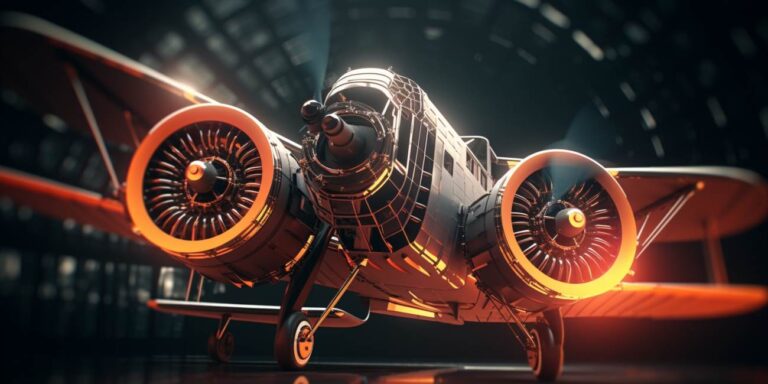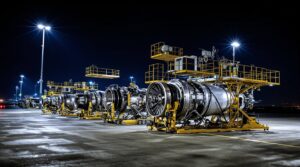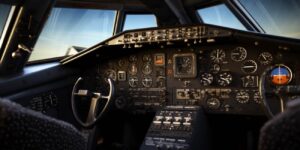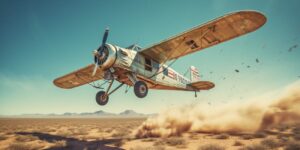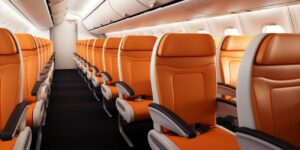Understanding what is aircraft yaw is pivotal for pilots and aviation enthusiasts alike. Unlike pitch and roll, which involve movements along the longitudinal and lateral axes, yaw is all about the aircraft’s directional control. It’s the motion responsible for pointing the nose in a different direction, a pivotal aspect of navigation and control.
Picture a compass rose, and you’ll grasp the essence of yaw. When an aircraft changes its heading, it’s essentially indulging in a bout of yaw. This movement can be controlled by various mechanisms, with the rudder playing a central role. The rudder is a movable control surface typically located at the tail of the aircraft. When the pilot applies rudder input, it induces a yawing motion, allowing the aircraft to change its course.
Now, let’s delve into the factors influencing aircraft yaw. Aerodynamic forces, engine thrust, and even crosswinds all contribute to this intricate dance in the sky. The aircraft’s design, weight distribution, and engine placement influence its susceptibility to yawing moments. Pilots skillfully manage these variables to maintain stable flight and execute precise maneuvers.
One might wonder, why is aircraft yaw so crucial? The answer lies in the seamless orchestration of flight. Yaw control is essential for maintaining coordination during turns, ensuring the aircraft doesn’t skid or slip off its intended course. Whether it’s a gentle banking turn or a sharp maneuver, pilots constantly adjust yaw to harmonize with pitch and roll, achieving a balletic balance in the air.
For a more technical insight into what is aircraft yaw, let’s explore the concept of adverse yaw. This phenomenon occurs when an aircraft rolls into a turn, and the increased lift on the outer wing generates more drag. To counteract this adverse yaw, pilots strategically apply rudder input, enhancing control and preserving the aircraft’s intended path.
Controlling aircraft yaw motion to ensure straight flight
Controlling aircraft yaw motion is a critical aspect of ensuring straight flight. Yaw, the rotation around the vertical axis, plays a pivotal role in maintaining the aircraft’s desired heading. To achieve this, pilots employ various control surfaces and systems to counteract yaw-inducing forces and moments.
The rudder is a primary control surface dedicated to managing yaw. Located on the vertical stabilizer at the tail of the aircraft, the rudder allows the pilot to apply a sideways force to the airstream, thereby inducing a yawing motion. This is particularly essential during crosswind conditions, where wind from the side can push the aircraft off its intended course.
Modern aircraft utilize sophisticated flight control systems that incorporate fly-by-wire technology. These systems electronically interpret pilot inputs and adjust control surfaces, including the rudder, to optimize stability and directional control. This integration enhances the aircraft’s ability to counteract disturbances and maintain a steady heading.
Yaw control also involves consideration of asymmetric thrust. In multi-engine aircraft, differences in engine thrust can induce yaw moments. Pilots must carefully manage engine power to maintain symmetry and prevent unintended yawing. Additionally, thrust vectoring systems, which alter the direction of engine thrust, can be employed to enhance yaw control capabilities.
The phenomenon of dutch roll is another challenge in yaw control. Dutch roll is a combination of yawing and rolling motions that can occur due to various factors, including asymmetric aerodynamic forces. Aircraft designers implement dampers and control algorithms to mitigate dutch roll tendencies and ensure smooth, coordinated movements.
Efficient yaw control is crucial for instrument flight, where pilots rely on instruments rather than visual cues. In such scenarios, automated systems and autopilots play a vital role in maintaining precise heading control. These systems continuously analyze sensor data and make real-time adjustments to ensure the aircraft stays on course.
Yaw control is closely linked to the overall stability and maneuverability of an aircraft. Engineers strive to strike a balance, designing aircraft with stable yaw characteristics for straightforward cruising while allowing for responsive maneuvers when needed. This delicate equilibrium is achieved through careful aerodynamic shaping, control system tuning, and advanced technologies.
The dangers of uncontrolled yaw in flight
Uncontrolled yaw during flight can lead to a cascade of perilous consequences, posing a significant threat to aircraft stability. One of the most notorious phenomena associated with uncontrolled yaw is the dreaded dutch roll.
A dutch roll is an oscillatory motion characterized by a combination of rolling and yawing. It typically manifests as a smooth rolling motion coupled with an oscillatory yaw, creating an unsettling dance in the skies. This phenomenon is a result of the interplay between lateral and directional stability, or more precisely, the lack thereof.
Imagine an aircraft caught in the grip of a dutch roll. The oscillations can escalate, leading to a loss of control if not promptly addressed. Pilots often compare it to navigating a ship through turbulent waters, a challenge demanding swift and precise responses.
Unmitigated dutch roll can escalate further into a more sinister state – the notorious spin. A spin is a sustained autorotation around the aircraft’s vertical axis, akin to a downward corkscrew motion. Once initiated, a spin can be exceptionally difficult to recover from, and the consequences are frequently catastrophic.
The journey from dutch roll to spin is a perilous one, emphasizing the critical importance of addressing any signs of uncontrolled yaw at the earliest stage possible. Aircraft designers meticulously engineer systems to enhance stability and control, aiming to minimize the likelihood of these dangerous scenarios.
The key to averting the dangers associated with uncontrolled yaw lies in understanding the aerodynamic factors governing stability. Aircraft are designed with inherent stability, but external factors, such as turbulence or sudden control inputs, can upset this delicate equilibrium, triggering dutch roll and potentially leading to a spin.
Modern flight control systems are equipped with sophisticated sensors and algorithms designed to detect and counteract uncontrolled yaw. These systems play a crucial role in maintaining stability during various flight conditions, acting as a safeguard against the onset of dutch roll and the subsequent descent into a spin.
How flight control surfaces manage aircraft yaw
Flight control surfaces play a critical role in maneuvering an aircraft, allowing pilots to navigate the skies with precision. Among these control surfaces, the rudder and ailerons specifically manage the aircraft’s yaw and control adverse yaw.
The rudder is a vertical control surface located at the tail of an aircraft. Its primary function is to control yaw, which is the side-to-side movement of the aircraft’s nose. When a pilot wants to turn the aircraft, they manipulate the rudder. By deflecting the rudder left or right, the airflow over the tail section changes, inducing a yawing motion.
Adverse yaw is an inherent challenge during aircraft turns. It occurs when the aircraft’s nose tends to move toward the outside of the turn due to differences in lift generated by the wings. This is where the ailerons come into play. Ailerons are hinged control surfaces on the wings that control the aircraft’s roll. During a turn, the upward aileron on one wing and the downward aileron on the other work in tandem, creating a differential lift that induces the roll.
However, the relationship between ailerons and rudder is crucial in addressing adverse yaw. As the pilot commands a turn by using the ailerons, there is a tendency for the aircraft to yaw in the opposite direction. This is because the increased lift on the outer wing produces more drag, creating a yawing moment. To counteract this adverse yaw, coordinated input on both the ailerons and rudder is essential.
Coordinated input means that as the pilot applies aileron input to initiate a roll, they simultaneously apply rudder input in the same direction. This ensures that the aircraft maintains balanced yaw and roll during the turn. Failure to coordinate these inputs can result in uncoordinated flight, leading to a skidding or slipping motion.
In essence, the rudder and ailerons work harmoniously to control both yaw and roll, with special attention given to addressing the challenge of adverse yaw. Pilots master the art of coordinating these control inputs to achieve smooth and controlled turns, demonstrating the intricate dance between the aircraft’s control surfaces.

